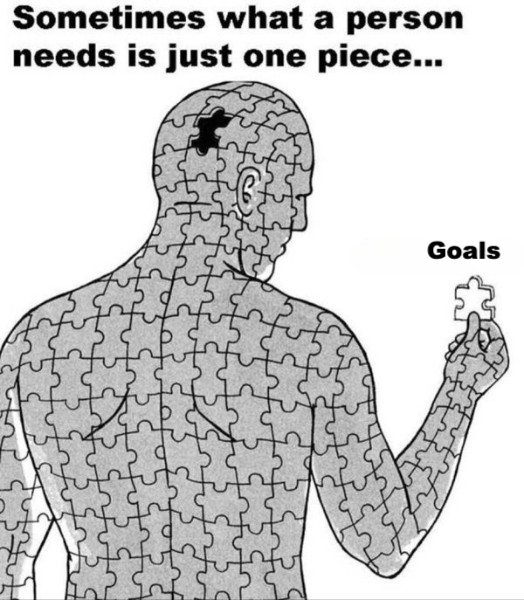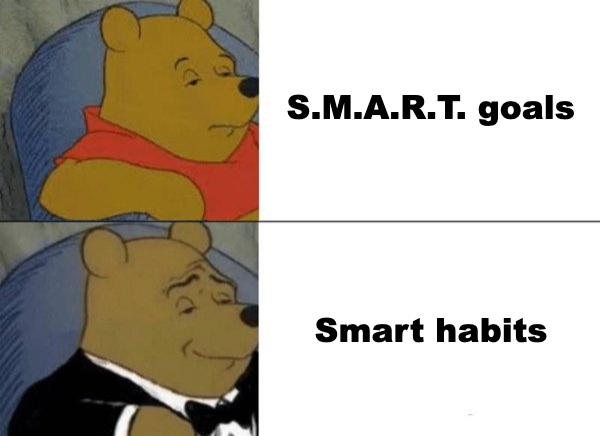
If you’re reading this, you’re a fast-moving, motivated entrepreneur. I am too.
But sometimes, that’s exactly our problem.
Because I’m so driven, I can struggle to focus. I want to take on the world! I want to do everything I set my mind to.
I learned the hard way, so you don’t have to.
It wasn’t until I mastered the science of goalsetting that I saw major progress in my life. Then I created BestSelf to capture a lot of that learning and grew the e-commerce company to $45 million in revenue.
This stuff works.
By understanding the science and using it to your advantage, you can stay focused on the task at hand and make significant progress toward meaningful goals. Here’s how:
The science of goal setting
✏️ All right, stick with me. I’m not a scientist, but I love following developments in the field. Feel free to ping me if I get something wrong or if I could add something to this portion of the essay:
The brain plays a crucial role in goalsetting – more than you’d expect.
When you set a goal, you activate your brain and release certain neurotransmitters and hormones that help you focus on that goal, motivate yourself, and plan for the outcome.
- Dopamine, associated with pleasure and reward, makes us feel motivated and excited about achieving our goals.
- Cortisol helps you stay focused and alert. Cortisol will keep you from getting distracted by the noise.
- Norepinephrine, involved in attention and focus, helps us concentrate on the tasks required to accomplish the goal.
- Serotonin, which regulates our mood up and down, is released when we make progress toward our goals. Making us feel happy, satisfied, and motivated to accomplish more.
Notice the cycle. Once you accomplish a goal and release serotonin, it motivates you to set a new goal and repeat the process.
The science is nuts! Your brain works in mysterious ways.
By understanding it, you can set, plan, and achieve your goals more effectively.
But the science doesn’t matter if you don’t put pen-to-paper, foot-to-pavement, rubber-to-road – whatever the saying is. So how do you set great goals worth accomplishing?
Phew. How’d I do, science people? 😅 S/O to Andrew Huberman for all I know about science.

How to set motivating goals
You’ve heard of SMART goals before: Specific, measurable, achievable, relevant, and time-bound.
Start by identifying the actual root goal. For example, you want to quit your job and run your own business. Let’s run this goal through the SMART framework:
- Specific – Make your goal specific so it’s easy to say whether you’ve achieved it or not. 1) Quit your job. 2) Start a business. 3) Earn a full-time income from that business. “Being an entrepreneur” is not a specific goal.
- Measurable – What will make you successful in starting your own business? Do you want to replace your full-time income? Or do you want to multiply it? Set a scale to measure whether you’re successful in your goal.
- Achievable – Make sure you have the resources and support in place to first quit your job, and then launch your own business. It’s certainly possible – Millions of people just like you have done it. Make sure you’re not aiming for the stars before even starting.
- Relevant – Is starting a business really in your interest? Like, are you struggling as an employee? Will this make you happier, healthier, and more fulfilled?
- Time-bound – Should you start your business as a side hustle before quitting your job? Probably. Set a date that you’ll ditch the full-time income and make the leap to your new business. Then it may not seem like a leap at all – rather a logical next step.
One mistake I see a lot of entrepreneurs make is setting easy goals to collect dopamine hits. But over time, you don’t make much progress.
Make your goals challenging but not impossible.

Control the inputs
Now setting the goal is only the first step, now you have that. Let’s break it down into actions.
You see an output goal is a good place to plant our flag when we achieve it. However, the way to get there is to break down the action steps. Control the inputs so the outputs take care of themselves.
For example, here’s a detailed breakdown of a weight loss goal:
Goal: Lose 15lbs in 3 months by March 31st
To lose 15 pounds in 3 months, you will need to consume fewer calories than your body burns in order to lose weight.
The only way to lose weight is to be in a calorie deficit. The first step to being in a deficit is to know your BMR (Basal Metabolic Rate), which is the number of calories your body burns at rest to maintain essential bodily functions.
1. Determine your Total Daily Energy Expenditure (TDEE)
Your Total Daily Energy Expenditure (TDEE) is an estimation of how many calories you burn per day when exercise is taken into account. To determine your TDEE, you can go here. For this example let’s say your TDEE is 1,839 calories.
2. Create a calorie deficit
To create a calorie deficit of 500 calories per day, you will need to consume no more than 1,339 calories per day. You can do this by reducing your intake of high-calorie foods and increasing your intake of low-calorie foods. Some examples of low-calorie foods include vegetables and lean proteins.
Daily:
- Eat no more than 1339 calories per day
- Consume 130 grams of protein
- Track daily food intake using Cronometer or MyBodyPro
- Drink 128oz of water per day
- Walk 10,000 steps per day
- Sleep 8 hours per night
Weekly:
- Weigh myself & track results (use this smart scale to make it easy)
- Meal prep and grocery shop in advance
- Schedule my workouts in advance & put in the calendar
You see how once we break down the big goal we know exactly what we need to do to reach it?
From here I can track my actions, and measure along the way. As long as my actions are done, the outcome goal should take care of itself.
Compound interest (on your goals)
James Clear nailed it in Atomic Habits, a book which (if I know you well 😉) you’ve already read.
He claims life progress comes down to being 1% better every day. Through daily tweaks and improvements over time, you can accomplish even your loftiest goals.
Habits are the bedrock of progress.
So ask yourself, what daily and weekly habits do I need to do to achieve my longer-term goals?

Also, your environment is critical in making progress toward your goals.
- Add friction — If you want to get rid of or decrease something in your life, add friction to your environment.
- Example: If you want to read more, try to cut out some screen time every day and divert that time to books. An easy way to reduce your screen time is by adding app limits. Then every time you open your phone to scroll TikTok, you won’t be able to. Use that regained time to crack open your book.
- Reduce friction — Want to make a habit or goal more accessible? Reduce friction to make it easier.
- Example: I want to go to the gym more next week. By choosing and setting out my workout clothes the night before, I don’t have to search for everything the next morning. Easy peasy.
The more negative triggers (these could be people, food, habits, notifications, tasks – you name it) you have in your life, the more likely you’ll fail your goals. Your environment plays a huge role in your goals.
(I covered this topic more in-depth in my video here.)
Last thing – Goals take time and effort. You won’t see results right away, and you’ll definitely suffer setbacks along the way. But if you make small habits that lead to progress, you’re on the right track.
And by the way, if you want a journal to track your progress, I’ve heard the BestSelf Journal is great. ☺️
Become a subscriber receive the latest updates in your inbox.





